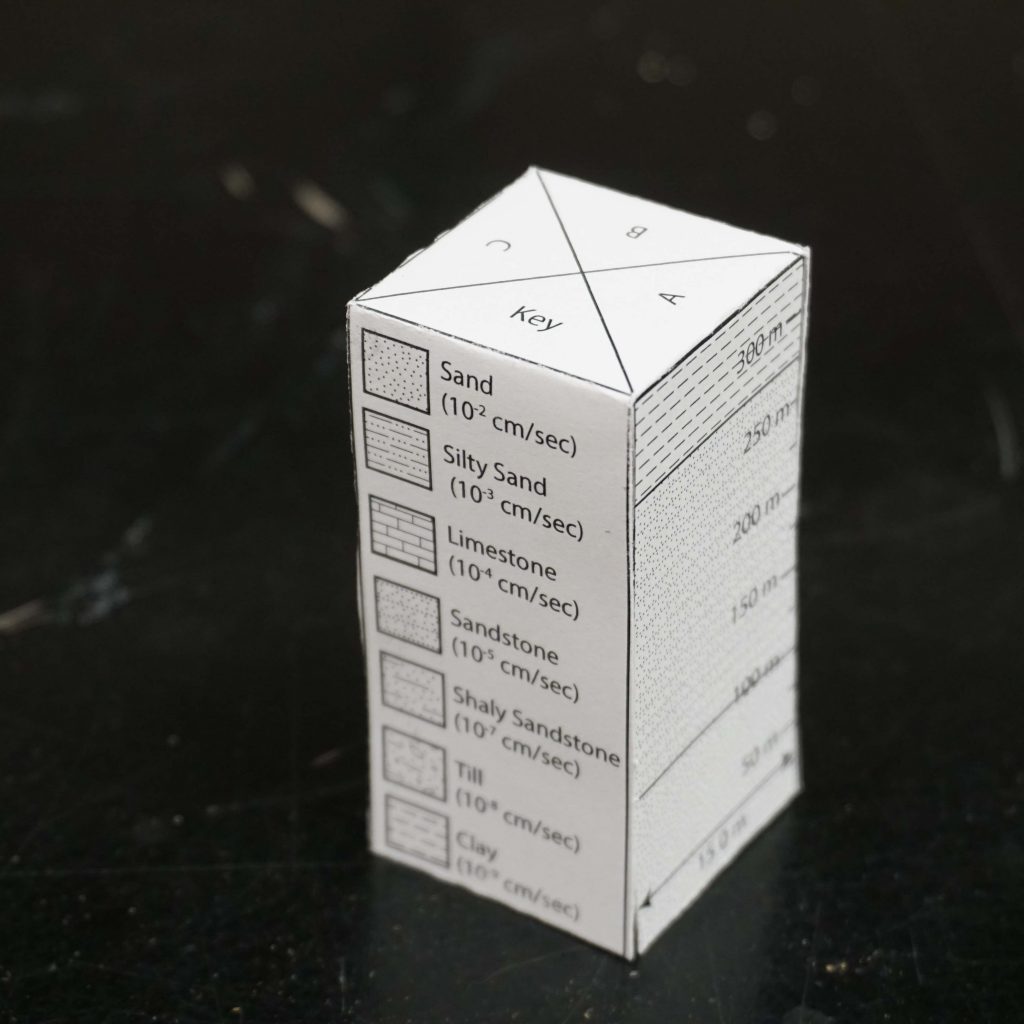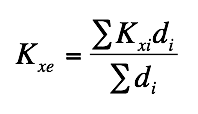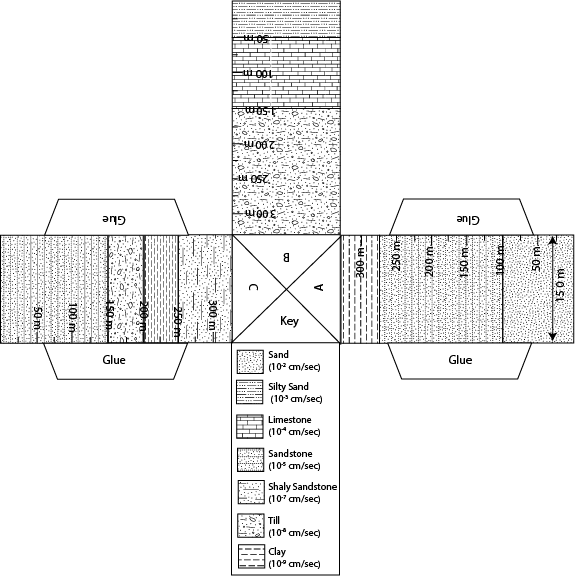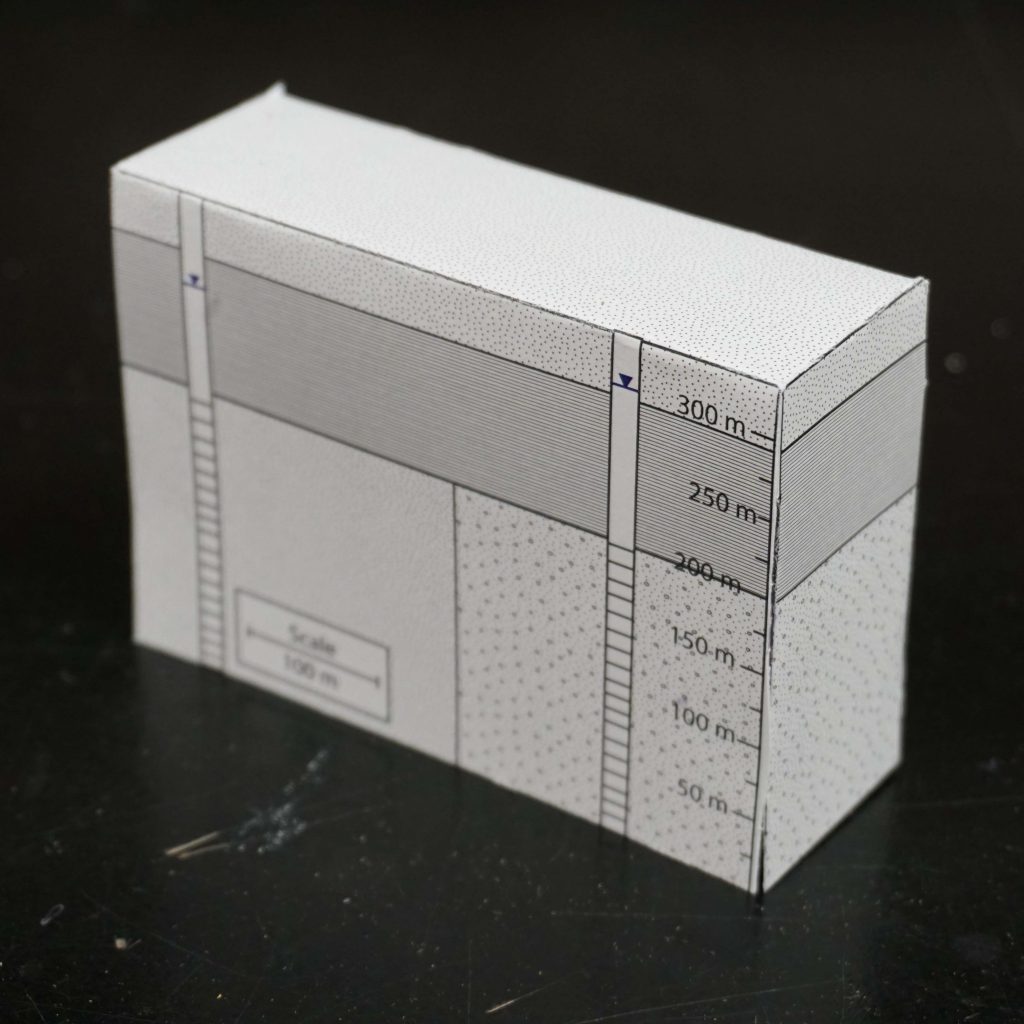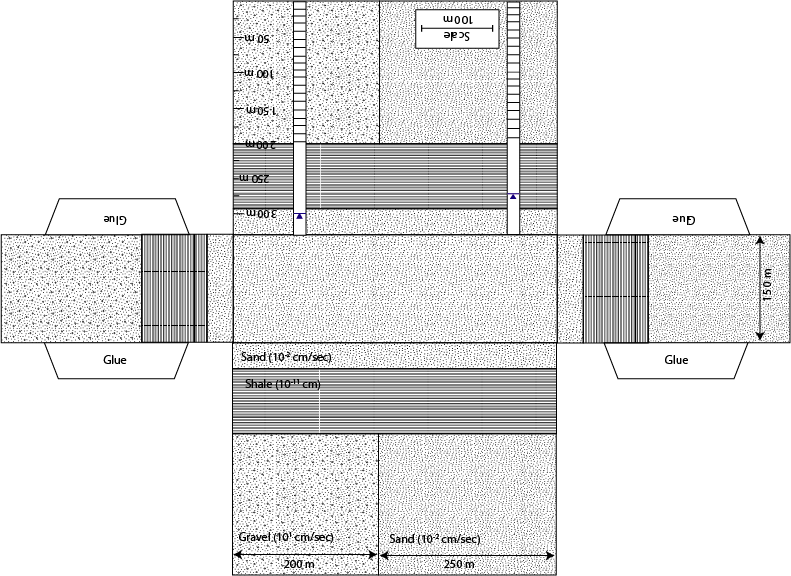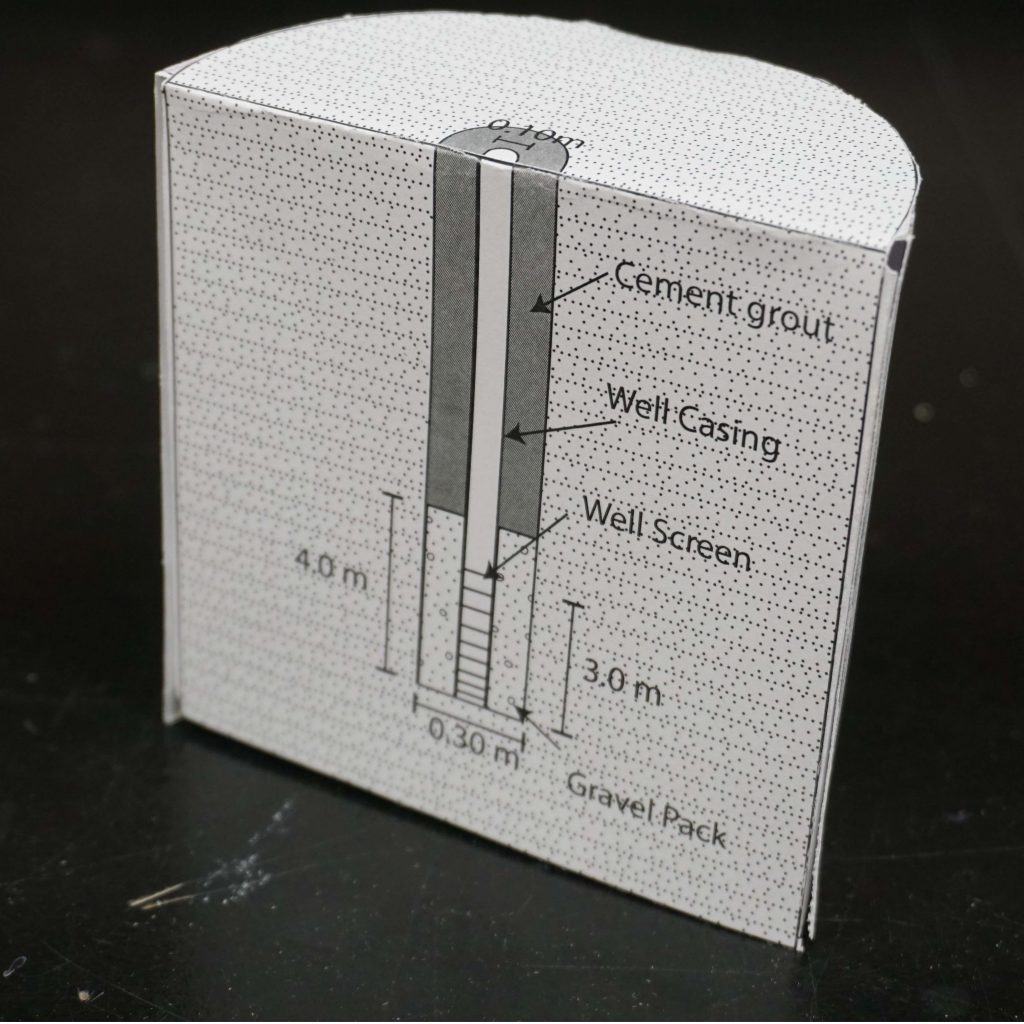
Objectives: Quantify hydraulic conductivity in an unconfined aquifer based on slug test data of changes in water levels over time.
1. The biggest unknown in groundwater problems is knowing the hydraulic conductivity of an aquifer. While there are multiple methods available for quantifying hydraulic conductivity one of the most popular methods is the slug test. This method artificially changes the water level in a well and monitors the response back to the static level. Using the data provided below and foldable aquifer model address the following problems.
Table1. Time vs drawdown data.
| Time (sec) | H-h/(H-Ho) |
| 1 | 1 |
| 10 | 0.89 |
| 20 | 0.75 |
| 30 | 0.64 |
| 50 | 0.3 |
| 100 | 0.28 |
| 120 | 0.2 |
| 180 | 0.08 |
| 200 | 0.05 |
| 300 | 0.02 |
A. Quantify the hydraulic conductivity using the Hvorslev method.
B. Based on the value of hydraulic conductivity above determine if this geologic unit makes a better aquifer or confining unit. Please explain your answer.
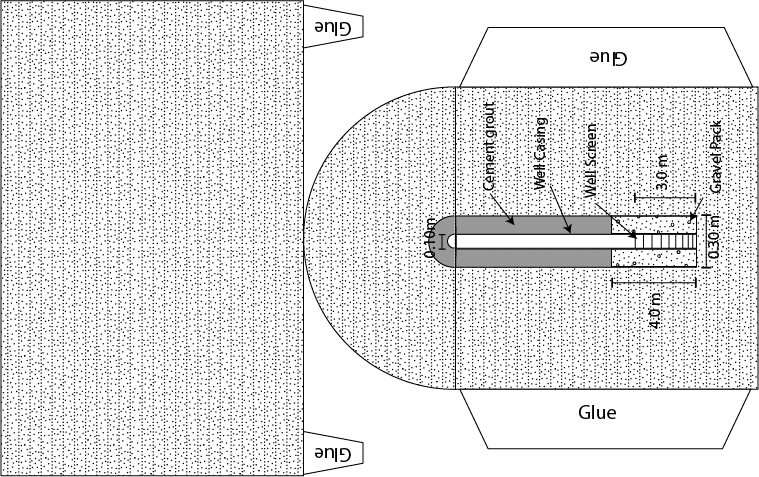

This work is licensed under a Creative Commons Attribution-NonCommercial 4.0 International License.

